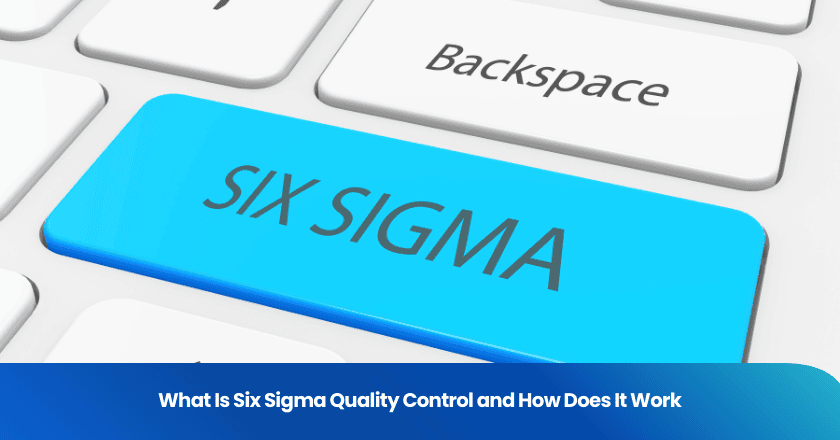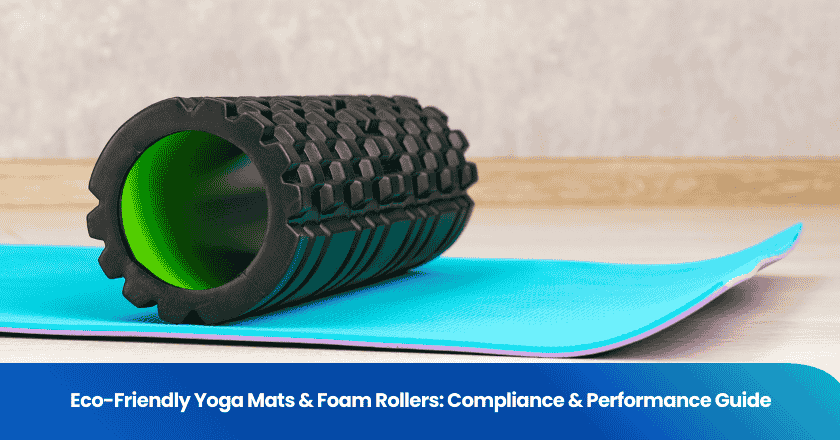
You want your organization to deliver products and services with as few errors as possible. Six sigma quality control gives you a structured way to achieve this goal. By focusing on continuous improvement, you can identify and eliminate defects in your processes. For example, in the rubber processing industry, adopting Six Sigma has led to a dramatic drop in defects, helping businesses maintain strong customer satisfaction. This method aims for an impressive standard—just 3.4 defects per million opportunities. You will see how a continuous focus on quality can help you compete and thrive.
Key Takeaways
- Six Sigma aims for a defect rate of just 3.4 defects per million opportunities, helping organizations deliver high-quality products and services.
- The DMAIC process (Define, Measure, Analyze, Improve, Control) is essential for improving existing processes by identifying and addressing root causes of defects.
- Implementing Six Sigma requires strong leadership support and a commitment to continuous improvement, ensuring that all team members are engaged and trained.
- Using data-driven decision-making leads to measurable improvements, such as reduced costs and increased customer satisfaction.
- Combining Six Sigma with Lean principles maximizes efficiency and quality, creating a culture of continuous improvement in any organization.
Six Sigma Quality Control Overview
Definition and Purpose
You encounter quality challenges in every industry. Six sigma quality control gives you a structured, data-driven approach to address these challenges. According to recognized industry standards, Six Sigma is a quality management methodology aimed at improving processes, products, or services by identifying and eliminating defects. You use statistical quality control techniques to minimize variance in manufacturing and business processes. This approach targets a defect-free rate of 99.99966%, which means only 3.4 defects per million opportunities.
You focus on minimizing defects and achieving consistent results. Six sigma quality control relies on statistical tools to diagnose performance gaps and variability. You enhance productivity and product quality by using a systematic approach to process improvement through data analysis. This method helps you achieve measurable reduction in errors and waste.
The main objectives of implementing Six Sigma in your organization include:
| Objective | Description |
|---|---|
| Reducing Variation | Establishing precise quality metrics and control procedures to minimize inconsistency in output. |
| Eliminating Waste | Preventing defects early in production to reduce costly rework and downtime. |
| Enhancing Quality | A systematic approach to quality objectives that lowers defects and improves overall quality. |
You use these objectives to guide your efforts in process improvement and lean six sigma initiatives. By focusing on reduction of variation and waste, you create more reliable processes and deliver higher quality outcomes.
Tip: Lean six sigma combines the principles of Six Sigma with lean manufacturing to maximize efficiency and quality in your processes.
Key Concepts
You differentiate Six Sigma from other quality management systems by its structured, project-based methodology and strong reliance on data. Lean six sigma uses two main frameworks: DMAIC (Define, Measure, Analyze, Improve, Control) and DMADV (Define, Measure, Analyze, Design, Verify). These frameworks help you achieve targeted reduction in defects and variation.
Here is how Six Sigma compares to other quality management systems:
| Key Concept | Six Sigma Description | TQM Description |
|---|---|---|
| Approach and Methodology | Structured, data-driven, project-based approach (DMAIC or DMADV) | Philosophy-oriented, process-based approach focusing on continuous improvement across the organization |
| Focus on Data and Analysis | Heavily relies on statistical analysis; led by trained individuals (Green/Black Belts) | Emphasizes qualitative elements like customer satisfaction and culture of quality |
| Scope of Implementation | Project-by-project basis with measurable goals | Holistic philosophy influencing all areas without project-specific focus |
| Organizational Structure and Roles | Structured hierarchy with defined roles (Champions, Black Belts, Green Belts) | Promotes collective responsibility for quality without specific roles or certification |
| Timeframe of Improvement | Quicker, project-specific improvements with measurable goals | Long-term improvement embedded in organizational culture, gradual and continuous |
| Customer Focus | Focuses on defect reduction and process optimization, indirectly improving satisfaction | Places customer satisfaction at the forefront, driving all quality efforts |
You benefit from several key concepts in lean six sigma:
- You make decisions based on hard facts and statistical analysis, not assumptions.
- You collect and analyze data to identify root causes of defects and variation in processes.
- You ensure that improvements are based on objective evidence, leading to predictable outcomes.
- You shift the focus from blaming individuals to understanding and improving processes.
- You refine workflows to create systems that minimize errors and enhance efficiency.
- You encourage proactive management and risk assessments to prevent issues before they arise.
- You set ambitious goals and use data to identify trends, ensuring continuous process improvement.
By applying these concepts, you drive reduction in errors, waste, and inefficiency. Lean six sigma empowers you to create robust processes that support long-term success.
Quality Management Methodology
DMAIC Process
You use the DMAIC methodology as a core quality management methodology for process improvement. This structured approach helps you solve problems and reduce variation in your processes. DMAIC stands for Define, Measure, Analyze, Improve, and Control. Each phase guides you to identify and address the root causes of defects. Here is a breakdown of the main steps:
| Step | Description |
|---|---|
| Define | Clarify the problem and scope, define the problem statement, and understand customer needs. |
| Measure | Quantify the current state by establishing baseline data and selecting the right metrics. |
| Analyze | Identify the root cause using statistical tools and data interpretation. |
| Improve | Develop and test solutions through brainstorming and pilot testing. |
| Control | Sustain the gains by monitoring performance and standardizing the improved process. |
You rely on a variety of statistical tools during DMAIC to analyze data and uncover the root causes of defects. Some of the most common tools include:
- Pareto Analysis to prioritize issues
- Histograms to visualize data distribution
- Control Charts to monitor process performance
- Regression Analysis to explore variable relationships
- Fishbone Diagrams and 5 Whys to drill down to the root causes of defects
This process ensures you address problems at their source, not just the symptoms.
DMADV Process
When you need to design new processes or products, you turn to the DMADV process. This approach stands for Define, Measure, Analyze, Design, and Verify. Unlike DMAIC, which focuses on improving existing processes, DMADV helps you build quality into new designs from the start. Here is how the two compare:
| Aspect | DMAIC | DMADV |
|---|---|---|
| Existing vs New | Improves existing processes | Creates new processes or designs |
| Objective | Incremental process improvement | Designs with Six Sigma quality from the start |
| Data Focus | Uses data from current processes | Gathers customer input for new designs |
| Tools Used | Statistical tools for existing data | Quality tools like FMEA for new designs |
| Timeframe | Shorter-term projects | Longer-term, design-focused projects |
| Mindset | Process improvement | Innovative design |
Industries such as aerospace, automotive, healthcare, software, and manufacturing frequently use DMADV for new product or process design. You benefit from this methodology when you want to prevent defects before they occur.
Data-Driven Approach
You achieve the best results in quality management methodology by relying on data. In Six Sigma, you collect both qualitative and quantitative data to understand your processes and verify improvements.
| Data Type | Description | Examples |
|---|---|---|
| Qualitative | Non-numerical information, often descriptive. | Process maps, Voice of the Customer feedback, Fishbone diagrams |
| Quantitative | Numerical, measurable data. | Cycle times, defect rates, customer satisfaction scores, cost savings |
You use qualitative techniques to understand the context and generate ideas. Quantitative techniques help you set baselines and confirm that your process improvement efforts work.
A data-driven approach allows you to monitor quality metrics, reduce defects, and respond quickly to issues. Many organizations report up to 40% fewer defects and 15-25% lower operational costs by using data to guide decisions. You can also leverage AI and machine learning to analyze complex data sets, predict outcomes, and adapt your processes in real time. This leads to higher customer satisfaction and more consistent performance.
Continuous Improvement Principles
Core Principles
You drive quality by following a set of core principles that guide continuous improvement in Six Sigma quality control. These principles help you focus on what matters most—delivering value and reducing inefficiencies. The table below summarizes the main principles:
| Principle | Description |
|---|---|
| Delivering Customer Value | Focus on processes that enhance customer satisfaction and eliminate inefficiencies. |
| Data-Driven Decision Making | Use of data to identify inefficiencies and make informed decisions for sustainable improvements. |
| Continuous Process Improvement | Commitment to ongoing assessment and optimization of workflows to adapt to business needs. |
| Employee Collaboration and Empowerment | Encouraging teamwork and empowering employees to identify and solve inefficiencies. |
You use these principles to create a culture where everyone seeks better ways to work. You rely on data to guide your decisions, not just intuition. You encourage your team to share ideas and take ownership of improvements. This approach ensures that continuous changes become part of your daily routine.
To measure how well you apply these principles, you track several types of metrics:
| Metric Type | Description |
|---|---|
| Financial Metrics | Measure economic impact, including cost reduction and return on investment (ROI). |
| Process Metrics | Assess efficiency and quality, including defect rate and yield rate. |
| Operational Metrics | Focus on performance and resource utilization, such as productivity and Overall Equipment Effectiveness (OEE). |
| Customer Satisfaction | Indicators like Customer Satisfaction Score (CSAT) and Net Promoter Score (NPS) measure customer feedback and loyalty. |
You monitor these metrics to ensure your continuous efforts lead to real improvements.
Roles and Certifications
You play a key role in continuous improvement by developing your skills and earning certifications. Six Sigma uses a belt system to define roles and responsibilities:
| Belt Level | Description |
|---|---|
| Yellow Belt | Foundational knowledge of Six Sigma principles; supports project teams and understands basic tools. |
| Green Belt | Skilled in analysis and data-driven problem-solving; works alongside Black Belts on process improvements. |
| Black Belt | Leads project teams; utilizes advanced tools for quality management and mentors Green Belts. |
| Master Black Belt | Highest level; trains and coaches others, develops metrics, and sets strategic direction for programs. |
Most professionals report a salary increase soon after certification. Black Belts often earn over $125,000, while Green Belts average $78,000. You gain not only financial rewards but also more opportunities for leadership and advancement in quality management.
Implementing Six Sigma
Getting Started
You begin your six sigma quality control journey by securing management buy-in and allocating a budget for training and project implementation. You train your team in essential roles such as Green Belts, Black Belts, and Master Black Belts. After building expertise, you select specific projects that target process improvement and enhance product quality. These steps help you create a foundation for continuous success and allow you to identify areas for improvement in your organization.
Tip: Start with projects that have clear, measurable outcomes. This approach makes it easier to track progress and demonstrate value to senior leaders.
Tools and Techniques
You apply six sigma tools to monitor, analyze, and optimize your processes. Statistical tools such as control charts, histograms, and Pareto analysis help you track quality and process stability over time. Root cause analysis techniques like Ishikawa diagrams and 5-Why analysis enable you to pinpoint the sources of defects. You use Failure Mode and Effects Analysis (FMEA) to assess risks and prevent failures before they occur. Digital quality management systems and advanced measurement equipment, such as Coordinate Measuring Machines (CMM), support real-time data collection and process management. Statistical methods like regression analysis quantify relationships between variables and reveal key process indicators. You rely on these tools to drive continuous process improvement and deliver better customer outcomes.
Overcoming Challenges
You may face several barriers when you implement six sigma quality control. Common challenges include lack of senior leader support, insufficient data, longer-than-expected project cycles, part-time Black Belt resources, and poorly defined projects. Resistance to change often arises among employees who worry about job security or increased workload. You overcome these obstacles by educating your team, involving them early, and providing ongoing training. Strong leadership support and executive sponsorship ensure you have the resources needed for success. You focus on customer-critical processes first and combine Six Sigma with Lean methodologies for maximum impact. Starting small and prioritizing high-impact areas helps you sustain continuous improvement and integrate Six Sigma into your organizational culture.
Quality Improvement Benefits
Main Advantages
You experience significant benefits of implementing six sigma when you focus on continuous quality improvement. You see how reducing waste in your processes leads to lower costs and higher productivity. You reorganize workflows to improve time management, allowing employees to prioritize critical tasks and deliver higher quality products. You notice that consistent delivery of higher quality products increases customer satisfaction and trust. You engage employees in problem-solving, which boosts motivation and productivity. You streamline processes, achieving higher revenues and lower costs.
- You eliminate inefficiencies, which results in fewer complaints and more loyalty from your customer base.
- You foster a culture of data-driven decision making, ensuring that every improvement is backed by evidence.
- You empower employees by involving them in decision-making, which enhances morale and engagement.
- You maximize customer satisfaction by delivering higher quality products and services.
- You achieve higher customer satisfaction through continuous quality improvement and reliable processes.
You compare six sigma to other quality management methodologies and see that six sigma focuses on eliminating defects and ensuring quality. Scrum emphasizes flexibility and quick iterations. When you integrate six sigma with Scrum, you enhance both productivity and quality. This hybrid approach works well in environments that require rapid feedback and collaboration, such as software development.
Note: Continuous quality improvement supports higher customer satisfaction and long-term business success.
Potential Challenges
You may encounter challenges during your continuous quality improvement journey. Resistance to change often arises when employees feel uncertain about new processes or worry about job security. You address these concerns by conducting stakeholder analysis, identifying and prioritizing individuals who influence the success of your quality improvement initiatives. You perform change readiness assessments to evaluate your organization's preparedness for continuous improvement.
You craft effective communication plans, tailoring messages to different stakeholder groups to address their specific concerns about quality improvement. You integrate change management strategies with technical methodologies, ensuring that both human and technical factors receive attention. You focus on continuous training and support to help employees adapt to new processes and maintain higher quality products.
| Challenge | Solution |
|---|---|
| Resistance to Change | Stakeholder analysis, effective communication, and ongoing support |
| Lack of Readiness | Change readiness assessment and targeted training |
| Integration of New Methodologies | Combining change management with technical approaches for continuous quality improvement |
You overcome these challenges by maintaining a commitment to continuous quality improvement and maximizing customer satisfaction. You create a culture that values higher quality products and continuous progress.
You have seen how Six Sigma quality control empowers you to reduce defects, improve processes, and drive measurable results. Successful case studies highlight that:
- Leadership buy-in shapes project success.
- A student-centered approach increases effectiveness.
- You gain reduced costs and better processes.
Continuous improvement encourages proactive problem-solving and helps your organization adapt to change. To start your journey, explore these learning resources:
| Training Type | Description |
|---|---|
| Virtual Instructor-led | Live training with certified experts |
| Group Training | On-site or private virtual sessions |
| Six Sigma Certification Online | Flexible, comprehensive online courses |
| Root Cause Analysis | Structured problem-solving methods |
| Lean Fundamentals | Process efficiency and waste reduction techniques |
| Lean Master | Advanced continuous improvement training |
| Design for Six Sigma (DFSS) | Defect prevention in new product development |
Embrace continuous quality improvement to build resilience and achieve long-term success.
FAQ
What industries use Six Sigma quality control?
You find Six Sigma in manufacturing, healthcare, finance, logistics, and technology. Many organizations use it to improve quality, reduce costs, and boost customer satisfaction. You can apply Six Sigma principles to almost any industry that values process improvement.
How long does it take to see results from Six Sigma?
You may notice improvements within a few months. Project timelines depend on complexity and team experience. Quick wins often appear early, while larger gains develop as you refine processes and build expertise.
Do you need advanced math skills for Six Sigma?
You do not need advanced math skills to start. Basic understanding of statistics helps, but most tools use simple concepts. Training programs guide you through the necessary calculations and data analysis.
Grow your business with TradeAider Service
Click the button below to directly enter the TradeAider Service System. The simple steps from booking and payment to receiving reports are easy to operate.



